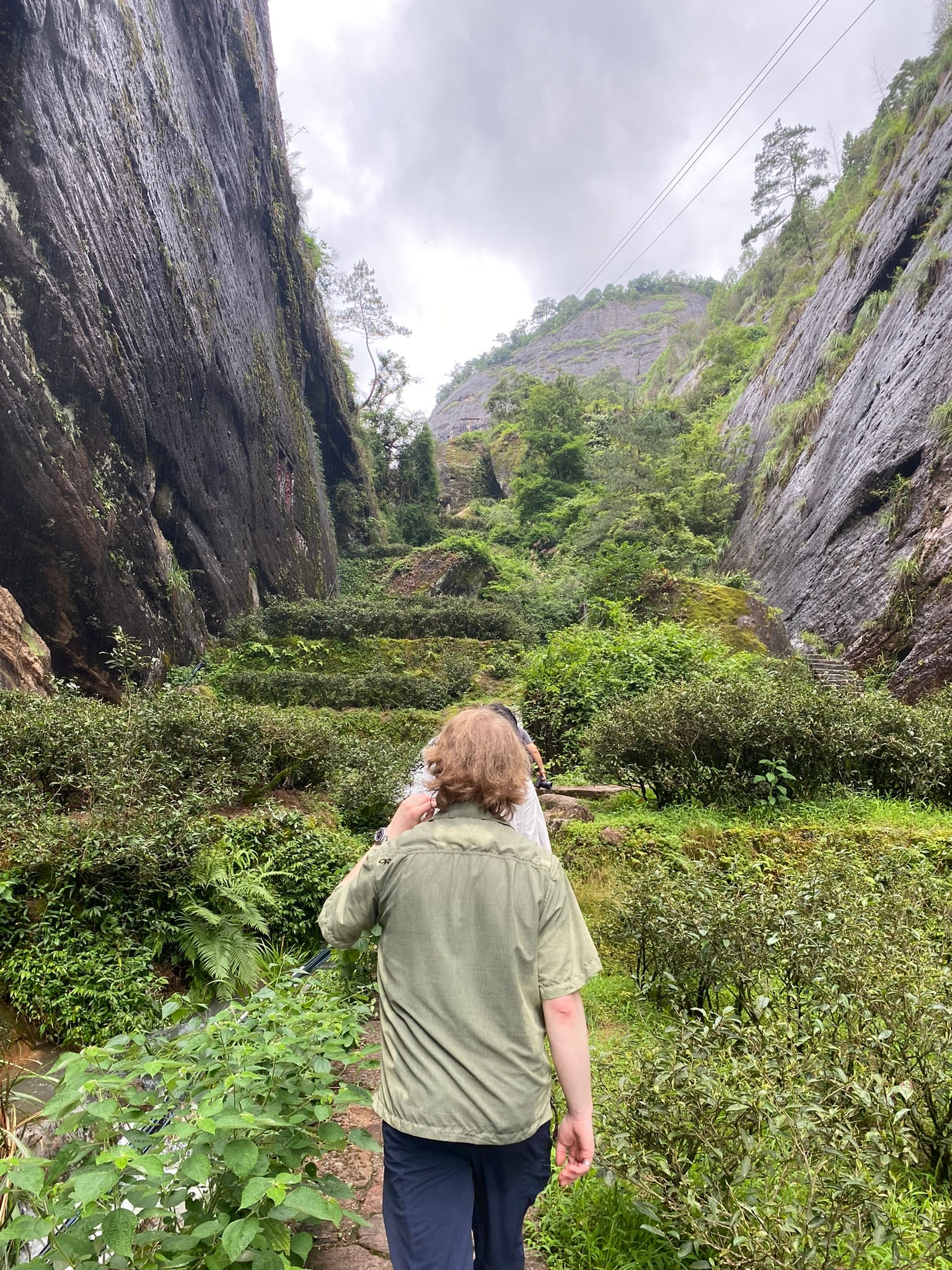I Barely Wuyi (武夷) - Tea Technique Research Trip 2024
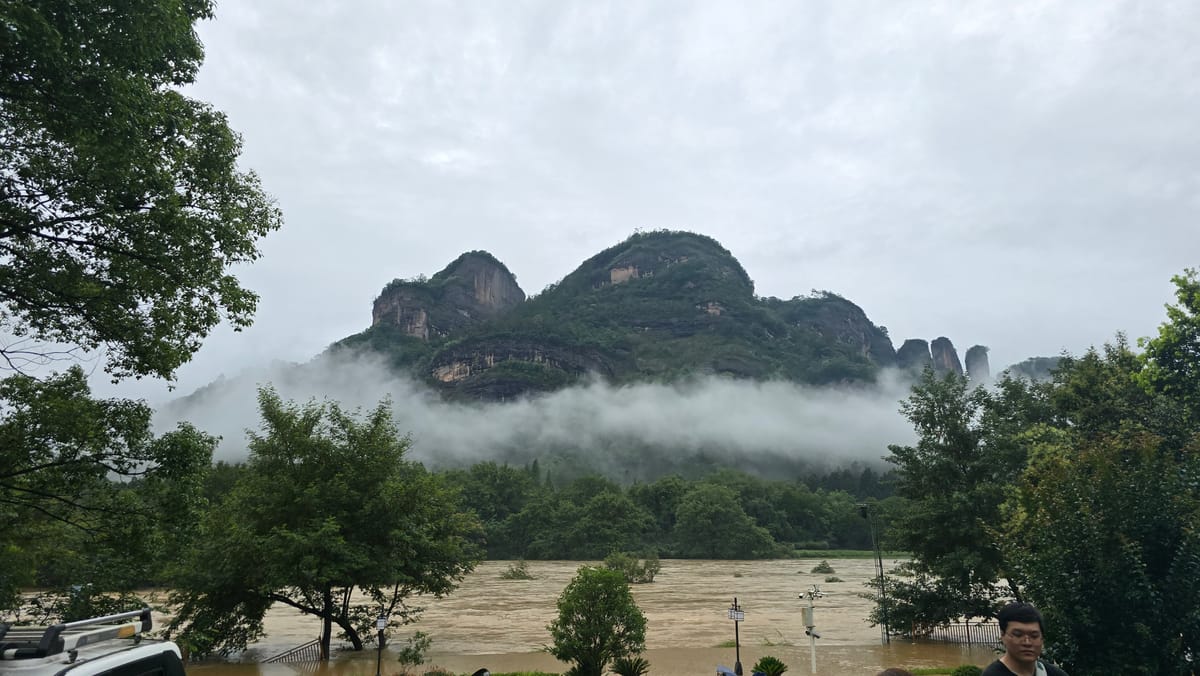
Listen to the Tea Technique Podcast on the 2024 Research Trip to Wuyi:
Intro
Wuyi may be the most mythical of China's tea origins, unique in history, environment, natural preservation, production process, and flavor profiles. It may also be the most hyper-real, a place of collective modern myth-making, a simulacrum of a mythical version of itself.
Wuyi is a sacred mountain, a historical and present home to Buddhist and Daoist monks, a wild environment immortalized in generations of paintings - and a commercialized, branded, and promoted tourist destination, where the idea of tea is half the draw, a product available to take home at every price level.
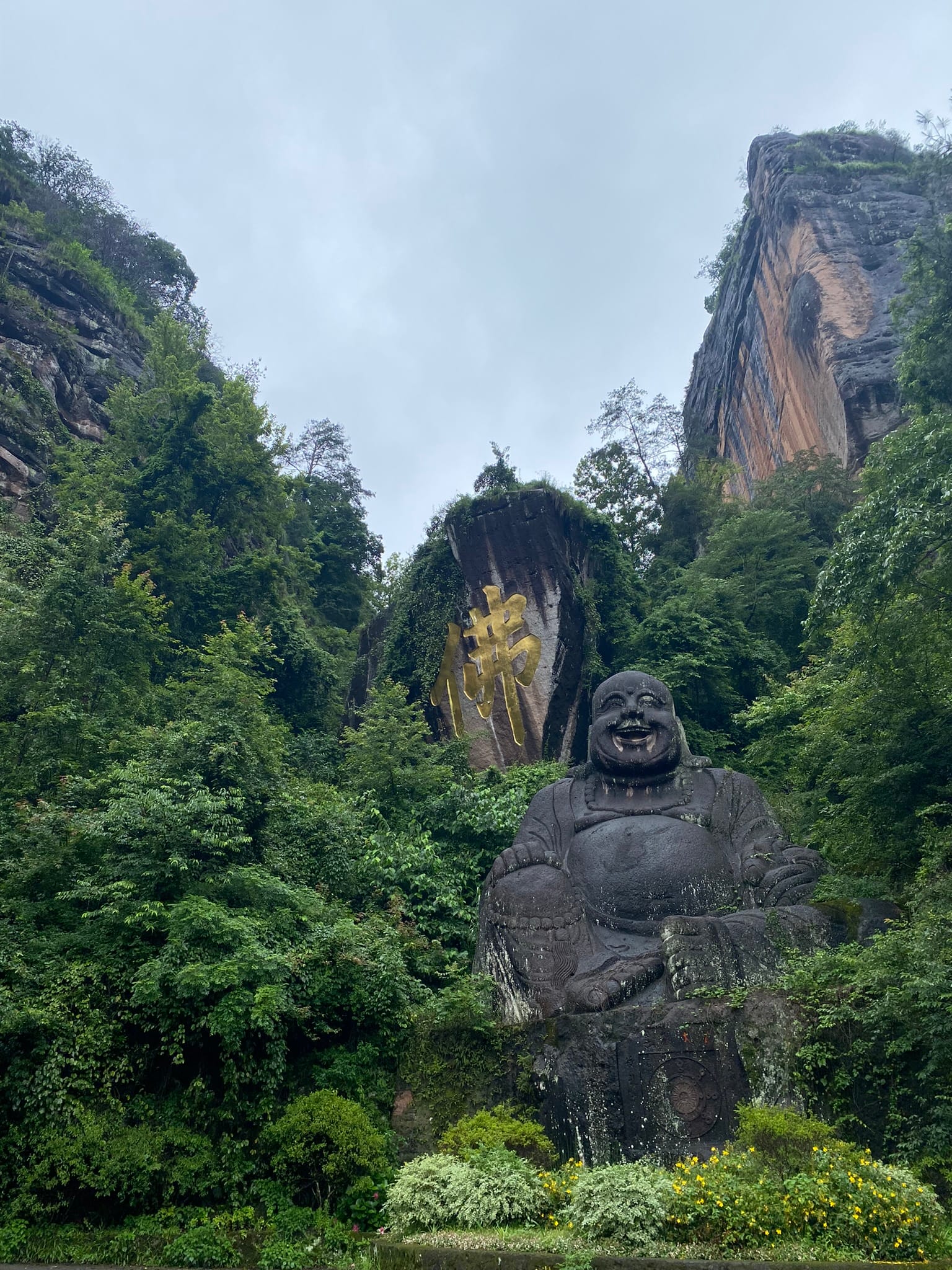
Great tea exists in Wuyi. Bad tea exists in Wuyi. The latter is more common than the former. The rest of this post will outline my thoughts on what we found in Wuyi during the tea Technique 2024 Research Trip.
Before I get called out for spoiling the magic or having a poor impression because we didn't meet the right people and see the right things, I'll note a few things: 1) I, like many practitioners of Chinese tea, have a deep appreciation for yancha, which has often been presented to me as the top-tier of Chinese tea by teachers and other trusted practitioners - I don't in any way dislike wuyi, or have a dis-preference for yancha, and in-fact have exceedingly great小品种 (“small cultivar”) yancha’s in my collection; 2) these trips are highly researched, starting months before we arrive, drawing on years of relationships and experience, relying on a large network of charen we trust - we have local contacts, excellent access to great tea, and warm introductions to trusted sources. Our experience is a product of what we are looking for: great tea from plant to cup, and a sense of the production methods, traditions, environment, and people that go into making that tea. It would be quite easy to enjoy Wuyi park as a tourist, which is not what is discussed here.
What matters in Wuyi Tea?
Charen, tea merchants, and lay-consumers in Wuyi (or those overexposed and undernourished outside of Wuyi), claim the order of importance in Yancha as:
- Terroir
- Cultivar
- Method and Skill of production
- The age of the tea tree
This list is as accurate as it is misleading.
The Environment - Terroir and Topography
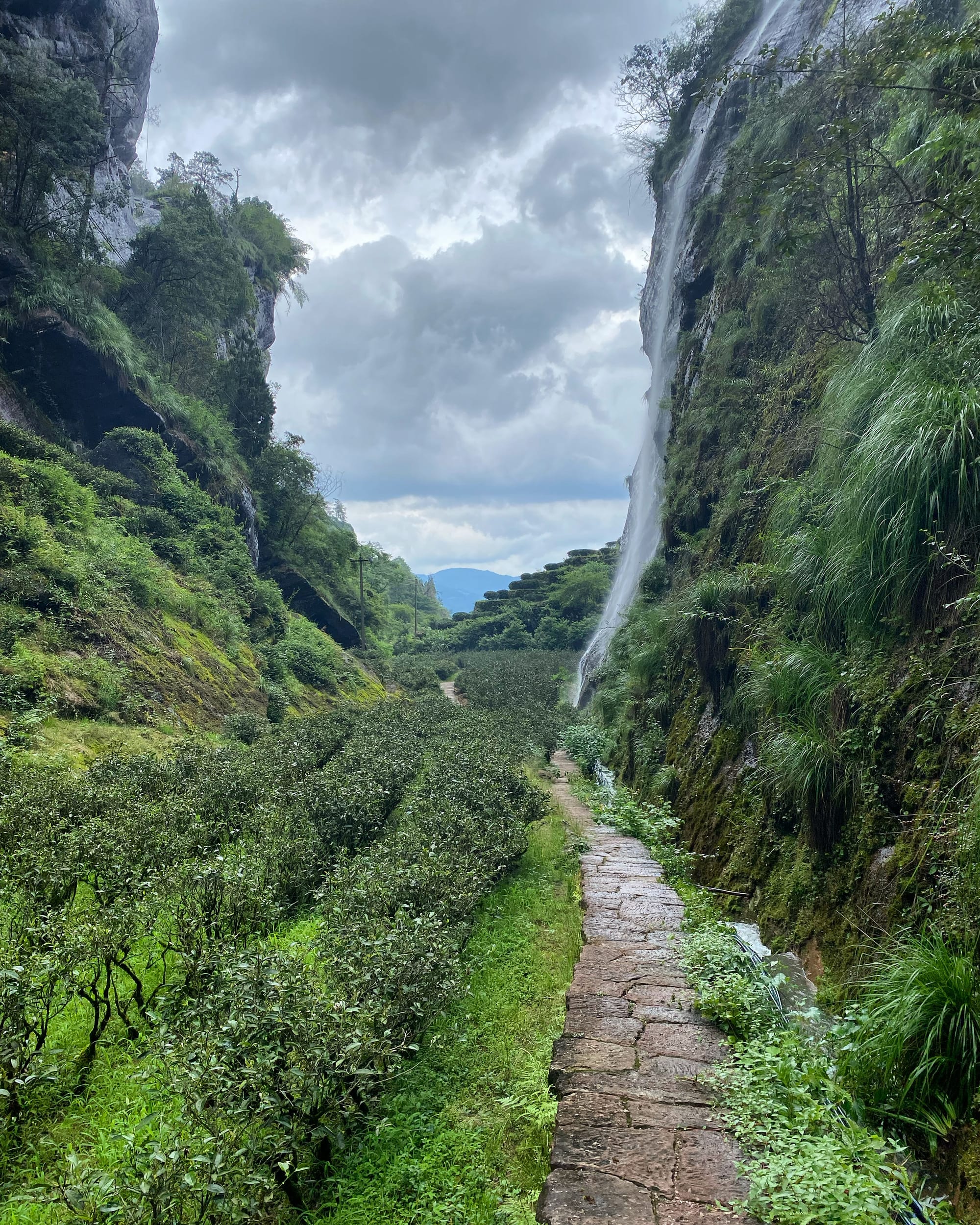
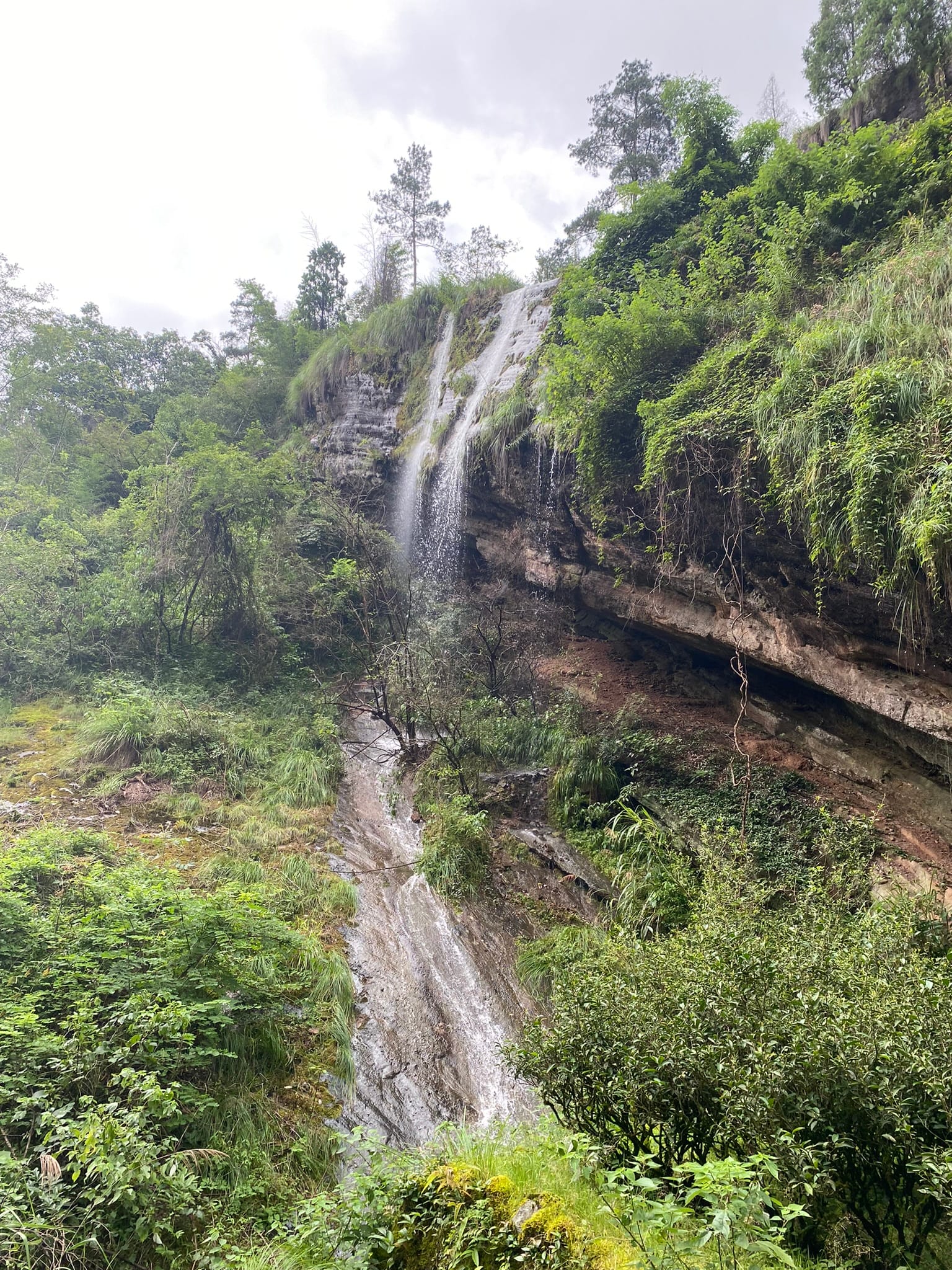
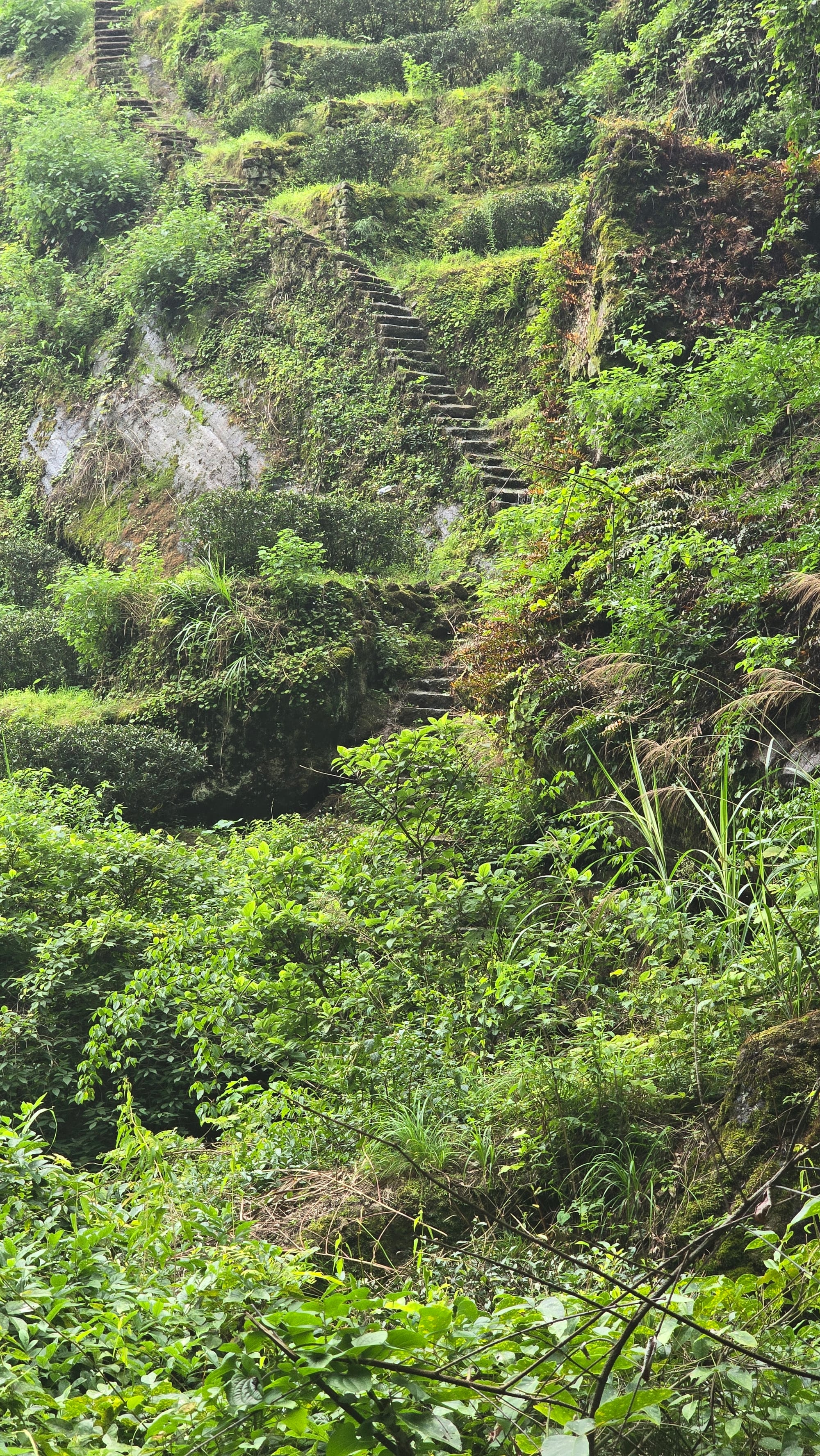
The waterfalls on the paths leading through the Wuyi mountains. All Photos taken by either Pat or Jason except the amazing one which is by Mr Zhou.
Wuyi is known for its unique topography, a tiny area of land laden with small peaks, deep valleys, overhanging rock faces, and a large central river fed by a mix of continuous springs and seasonal rain water cascading down the rock faces. It is said that the water flowing over the rocks and into the valleys carry the nutrients which give yancha (good yancha) it's 岩韵 (yanyun, "rock charm").
Unlike most other regions where the best tea grows near or at the top of the mountain with open exposure to the sun and wind, in Wuyi the best tea grows on the steep cliff faces found in the valleys. A two-sided valley with occasional water-flow is often called a Keng (坑); less common, a region with continuous water flow is called a Jian (涧; the best of which are 3-sided valleys, a valley with only 1 exit). These topographical features, and many others, create unique micro-climates and novel tea growing environments which is said to be the primary source of flavor and quality for yancha.
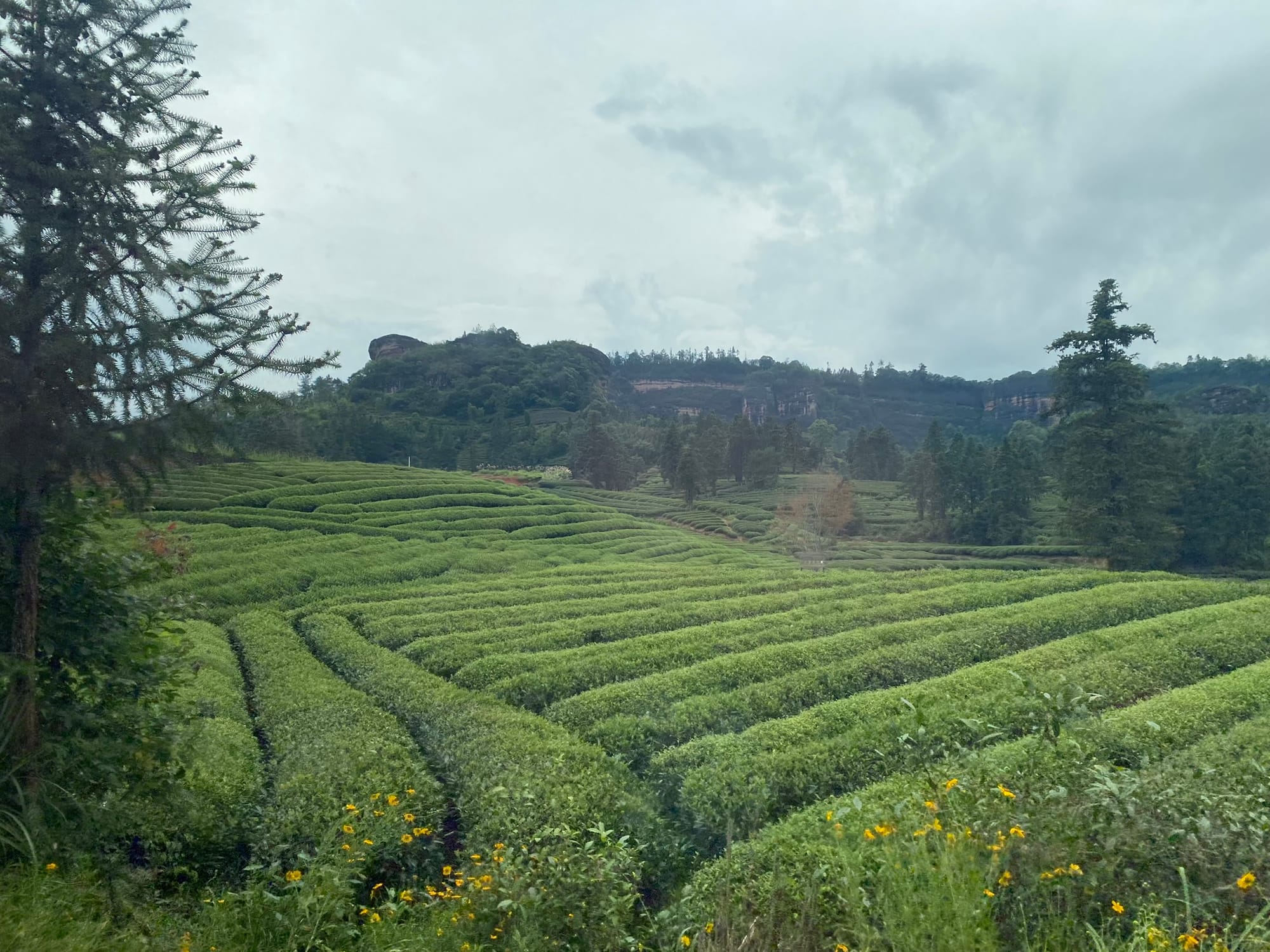
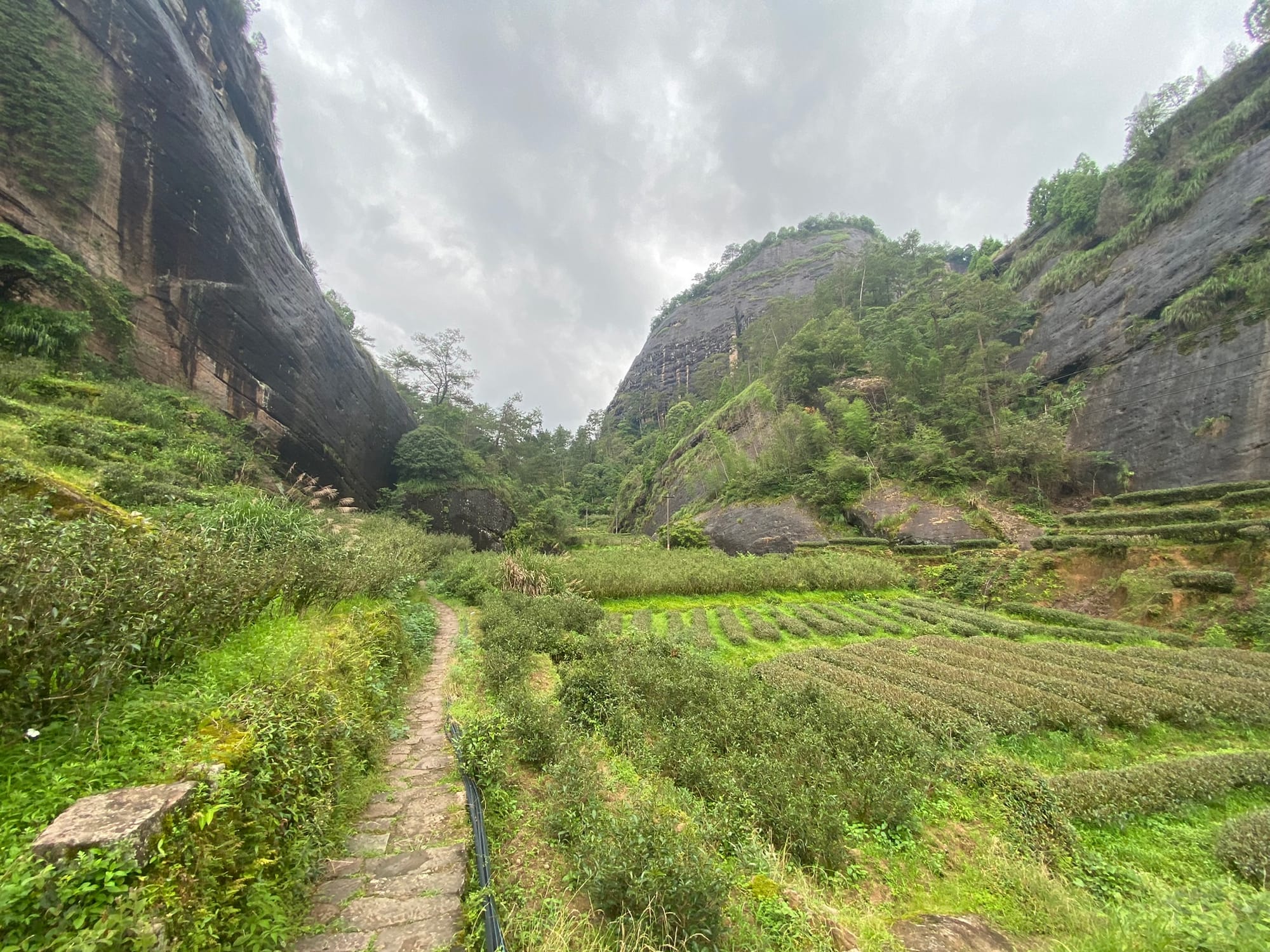
On the left, flat-land tea plantation within Wuyi park, close to the river; on the right, flat-land tea plantation within Wuyi park, higher up on the mountain. These teas can both be sold as Zhenyan (正岩). Some people consider the tea on the right to be “true cliff tea”.
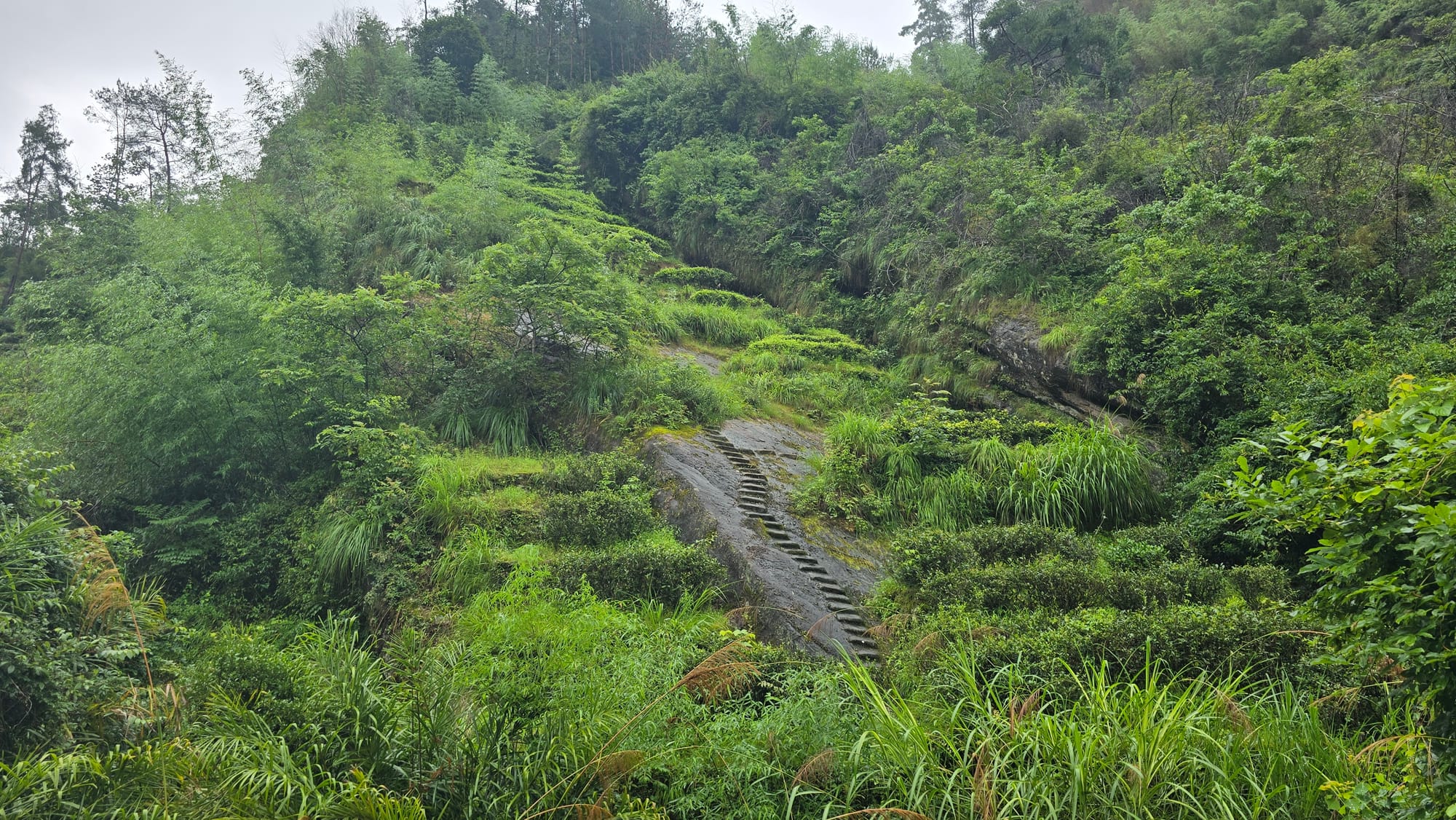
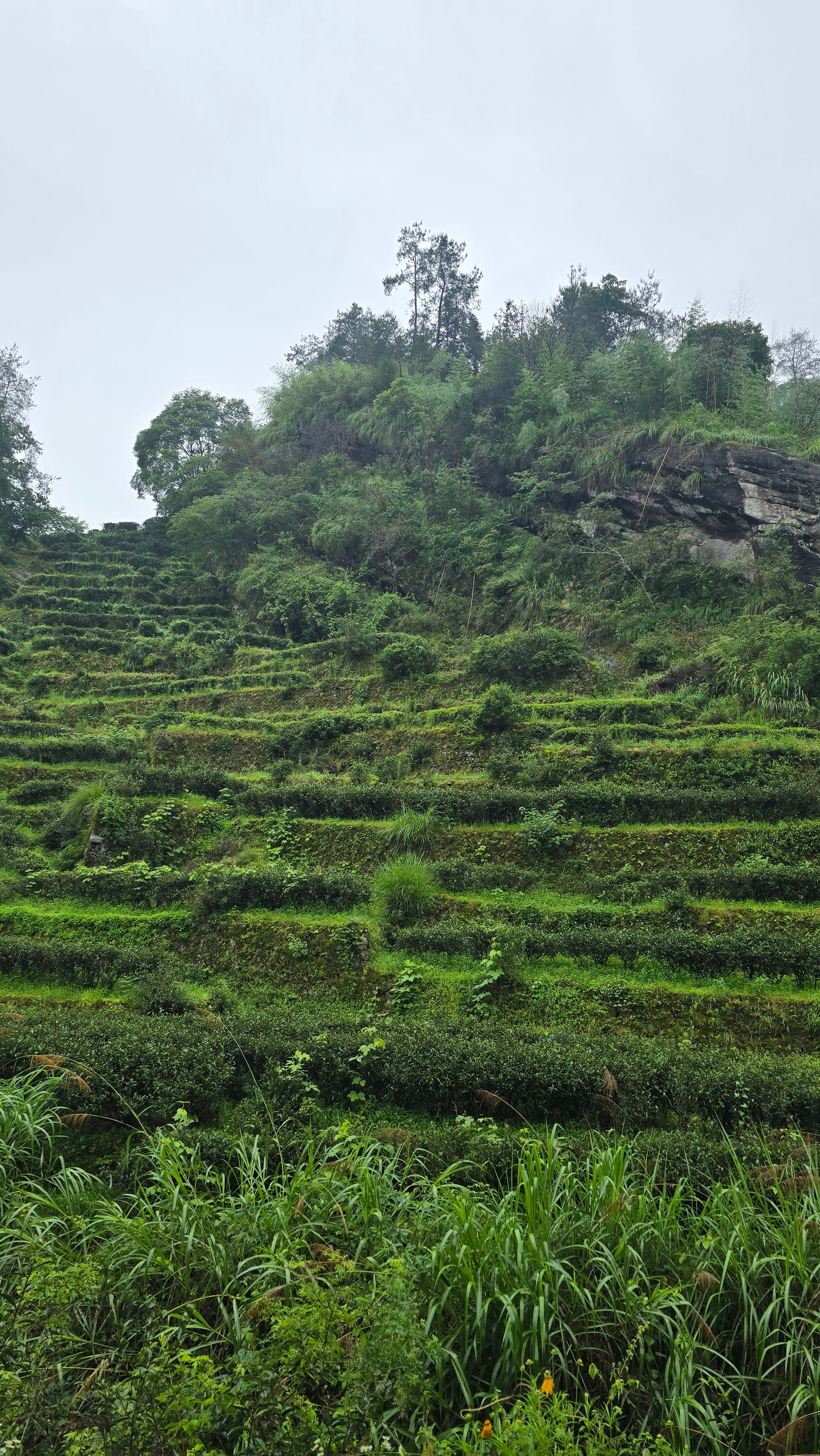
The tea growing on the terraced slopes of this valley is sought after and highly acclaimed. This is considered “true cliff tea”, though it is only in a Keng, not a Jian.

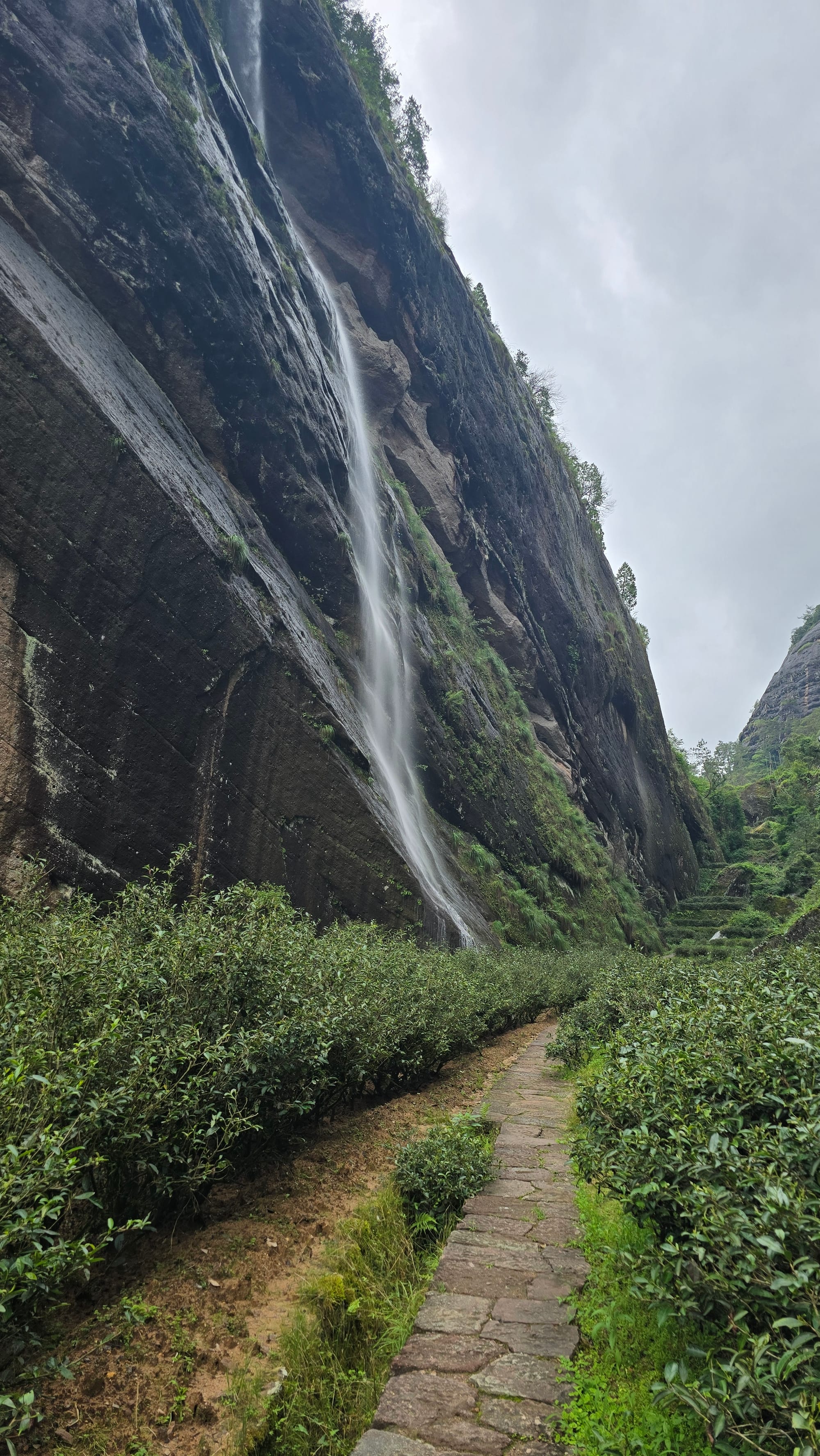
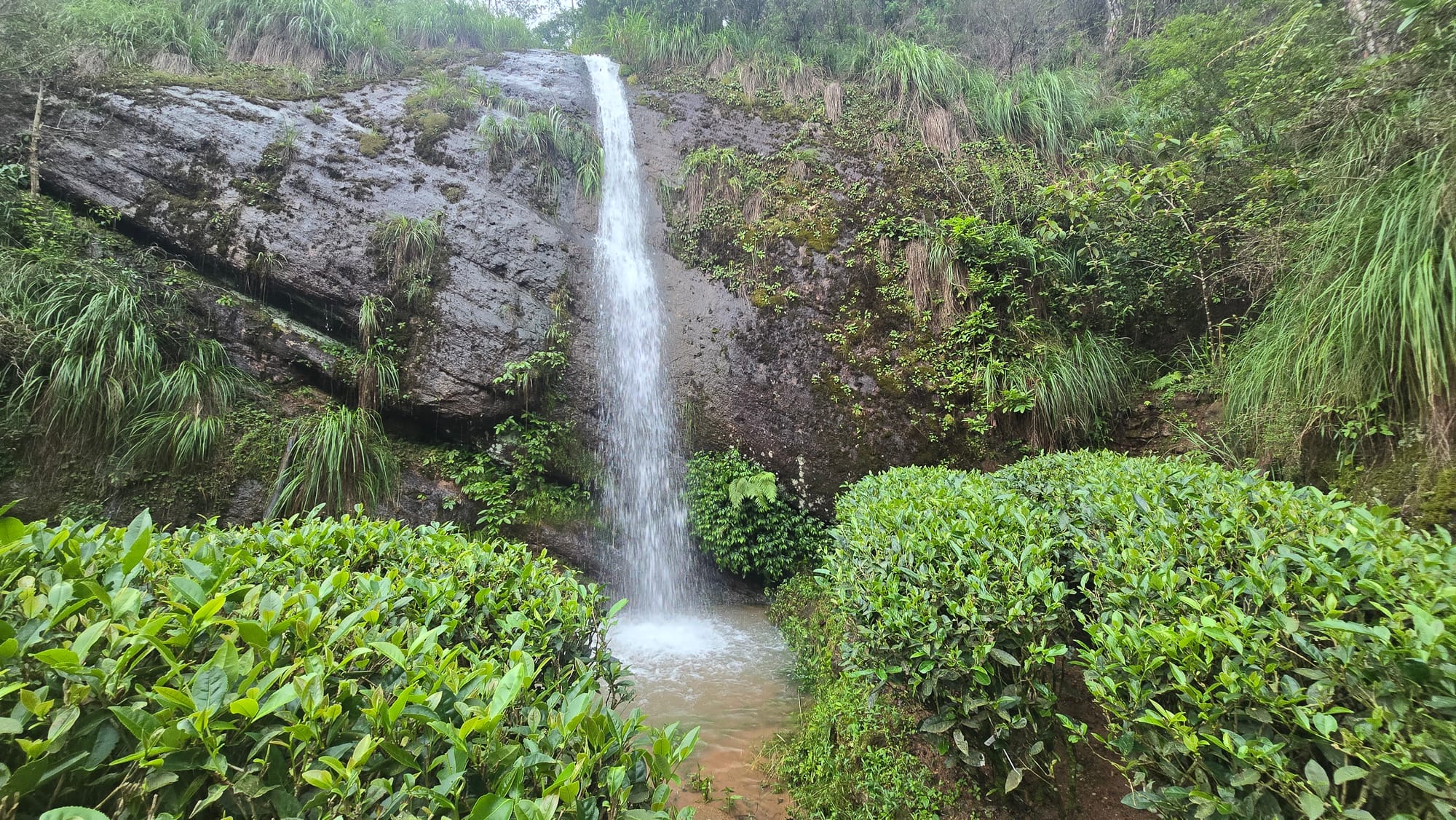
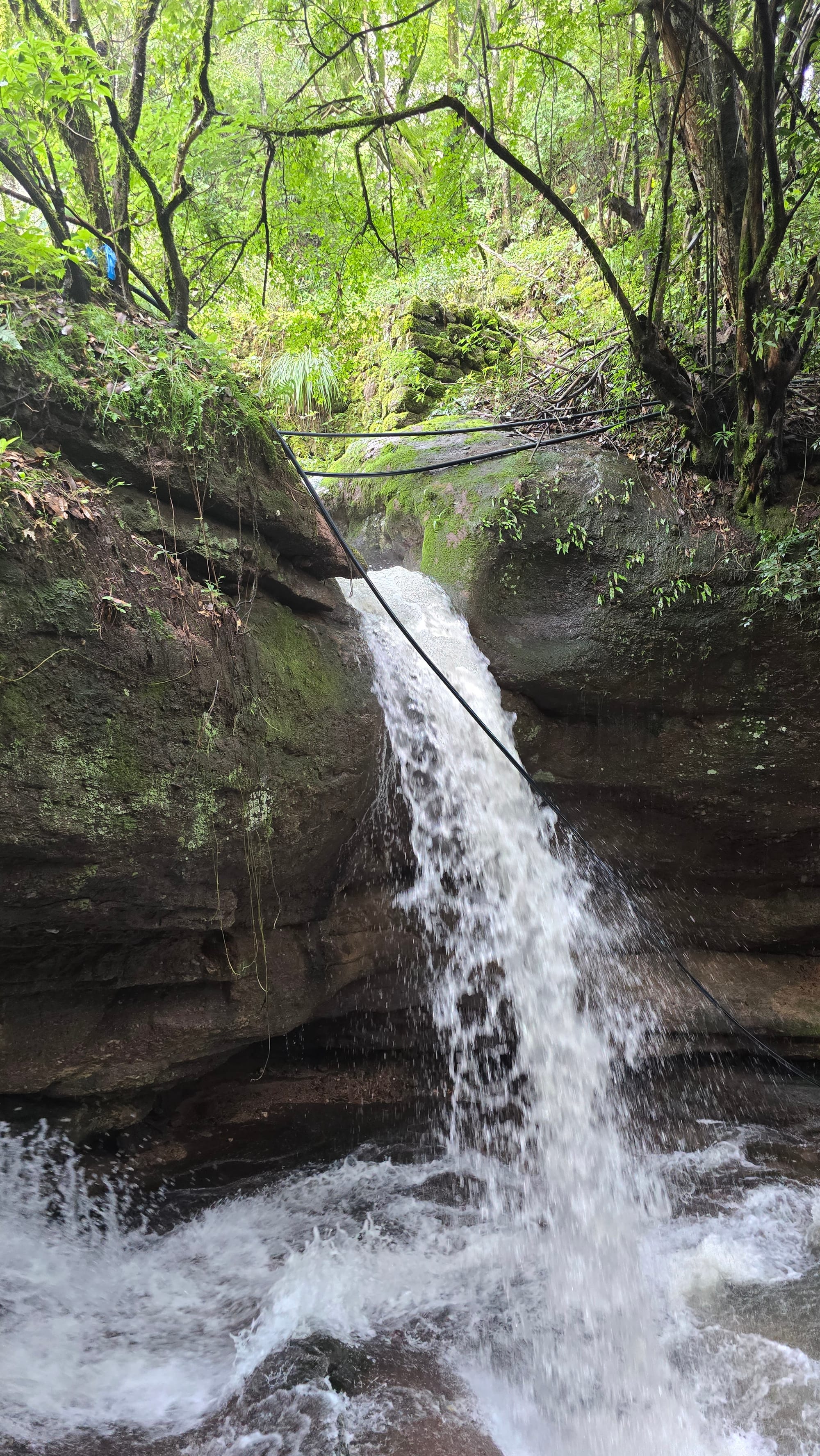
Water flows everywhere in Wuyi, from the mountains to the fields and eventually into the river. The water is clean and cold and cascades from a slow trickle to raging rapids. Wuyi water is famous throughout China for its purity and mineral flavor.
Many vistas and scenes within Wuyi are stunningly beautiful and awe inspiring. This is no doubt why generations of poets and religious men have made pilgrimages to Wuyi, visiting the monasteries and hermitages of Buddhists and Daoists, tasting the tea, and taking in the natural beauty.
It should be absolutely clear that the vast majority of Yancha tea, even 正岩岩茶 (Zhengyan Yancha), does not come from a pristine premier pit, peak, keng, or jian. The majority of the tea from inside the "true cliff" park is grown on the flat-land by the 9 Bend River. There is little to recommend the terroir or environment of this tea, despite its presence within the park. Is this river tea sold as "正岩岩茶"? It depends on the merchant and buyer.
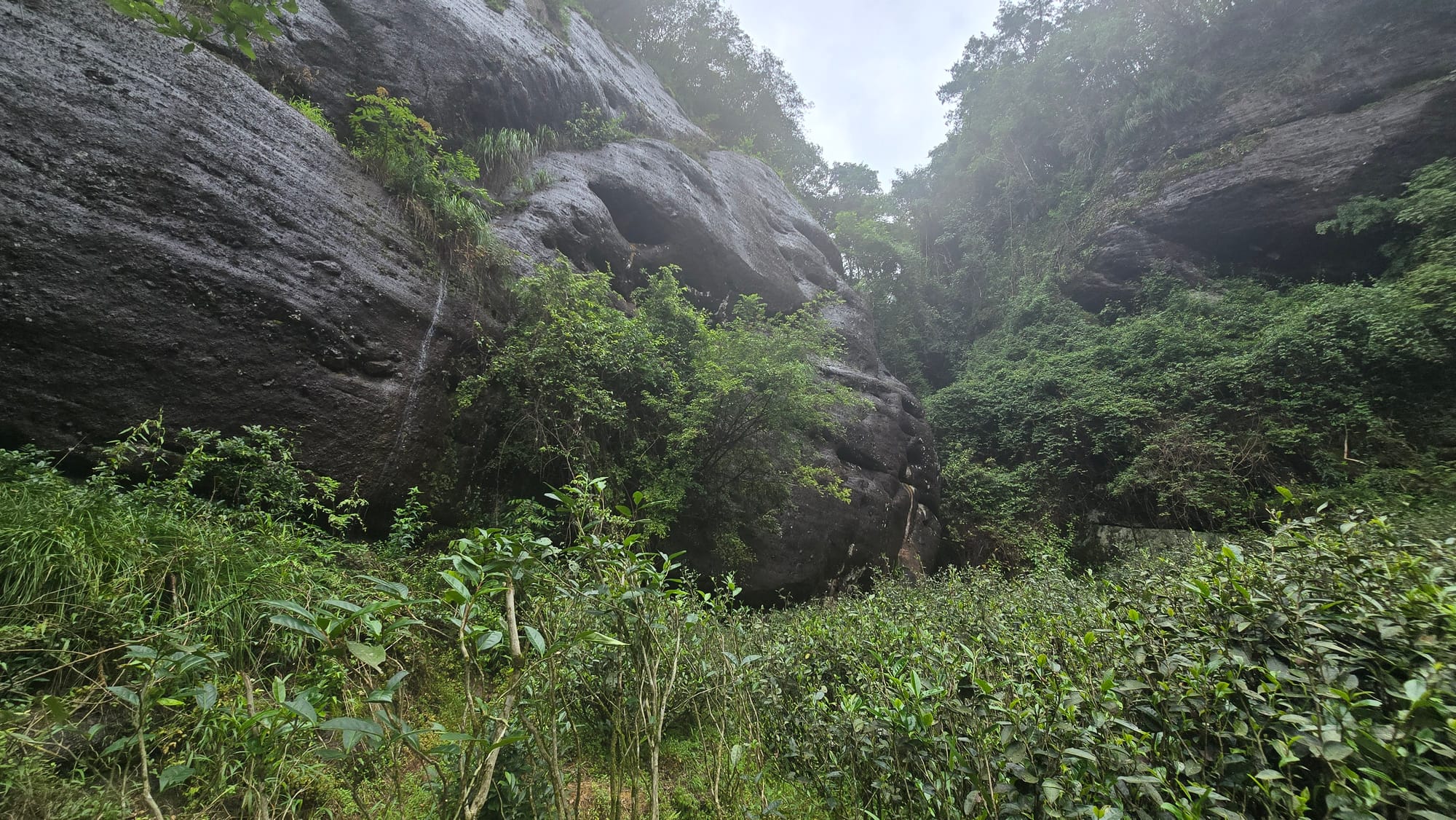
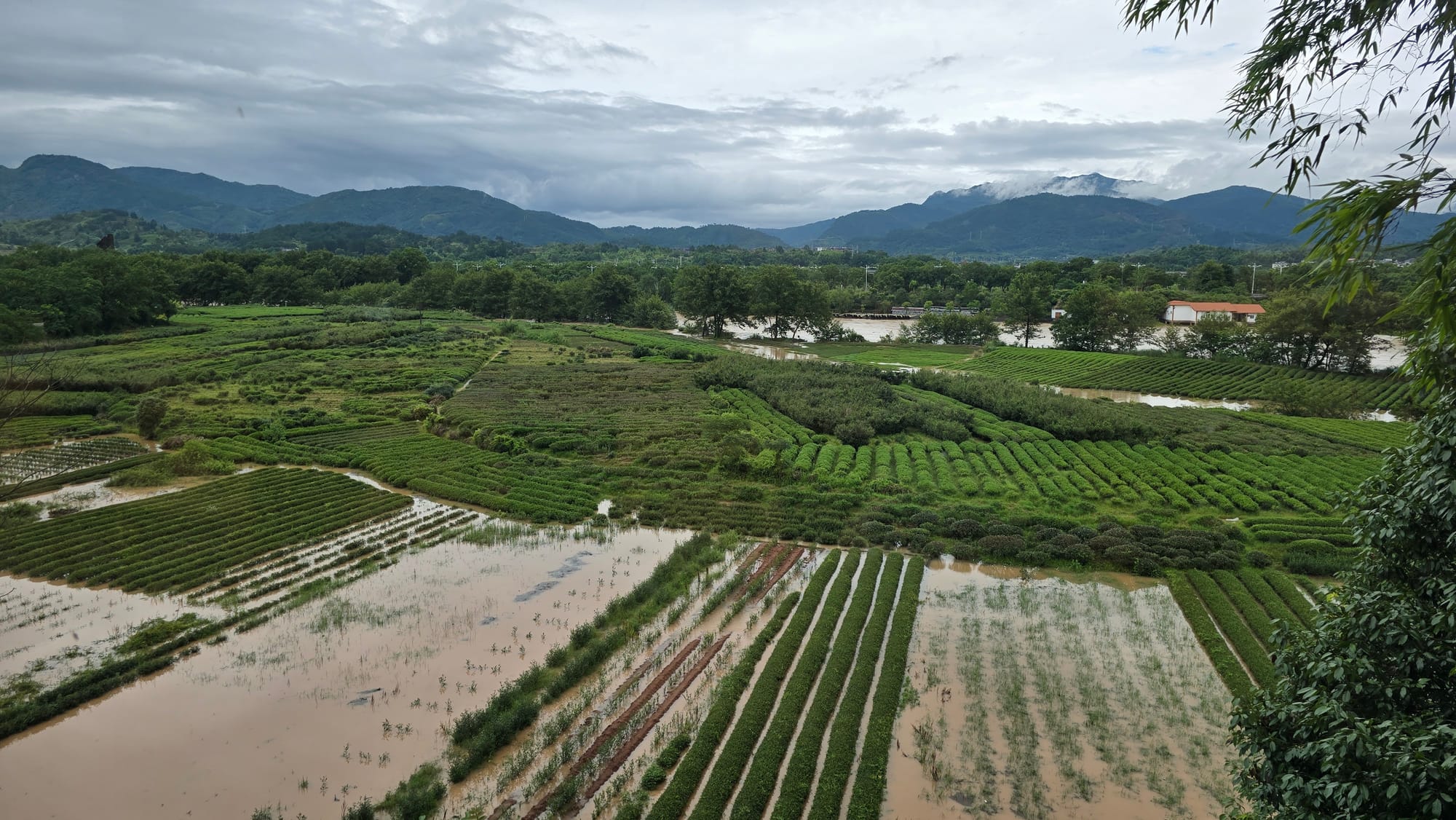
These two tea gardens, both inside the park, are only a few hundred meters away from each other. On the left is a Jian, growing higher quality tea, on the right a flooded river plain growing lower quality tea.
It is also worth noting that, just meters away, there are thousands of acres of tea plantations that ring Wuyi on all sides - how much of that tea is sold as zhengyan Wuyi tea?
The Environment - Tea Ecology and Environmental Preservation
Despite all of this laudatory and effusive praise of Wuyi’s beauty and natural splendor, it is at least a little difficult to take the Wuyi contention of terroir as the primary determinant of quality very seriously, when the most famous tea growing cliffs carry the least healthy tea bushes.
The price of Wuyi tea leaves from the famous areas are illogical – entirely disconnected from any conception of quality, feeling (cha qi, 茶气), or taste. Tea from Niu Lan Keng (牛栏坑) can fetch over $5 / gram, shuixian (水仙) from Hui Yuan Keng (慧苑坑) over $10 / gram; there is little variability in the price, and farmers are thus incentivized to increase yield – using tremendous amounts of inorganic fertilizer to do so. The tea bushes of Niu Lan Keng were sprouting green tips in the mid-summer, long after harvest has ended. Most of the farmers now de-crown their tea bushes every 2 years, cutting off the top growth of the tree to force it to produce more branches for higher yield.
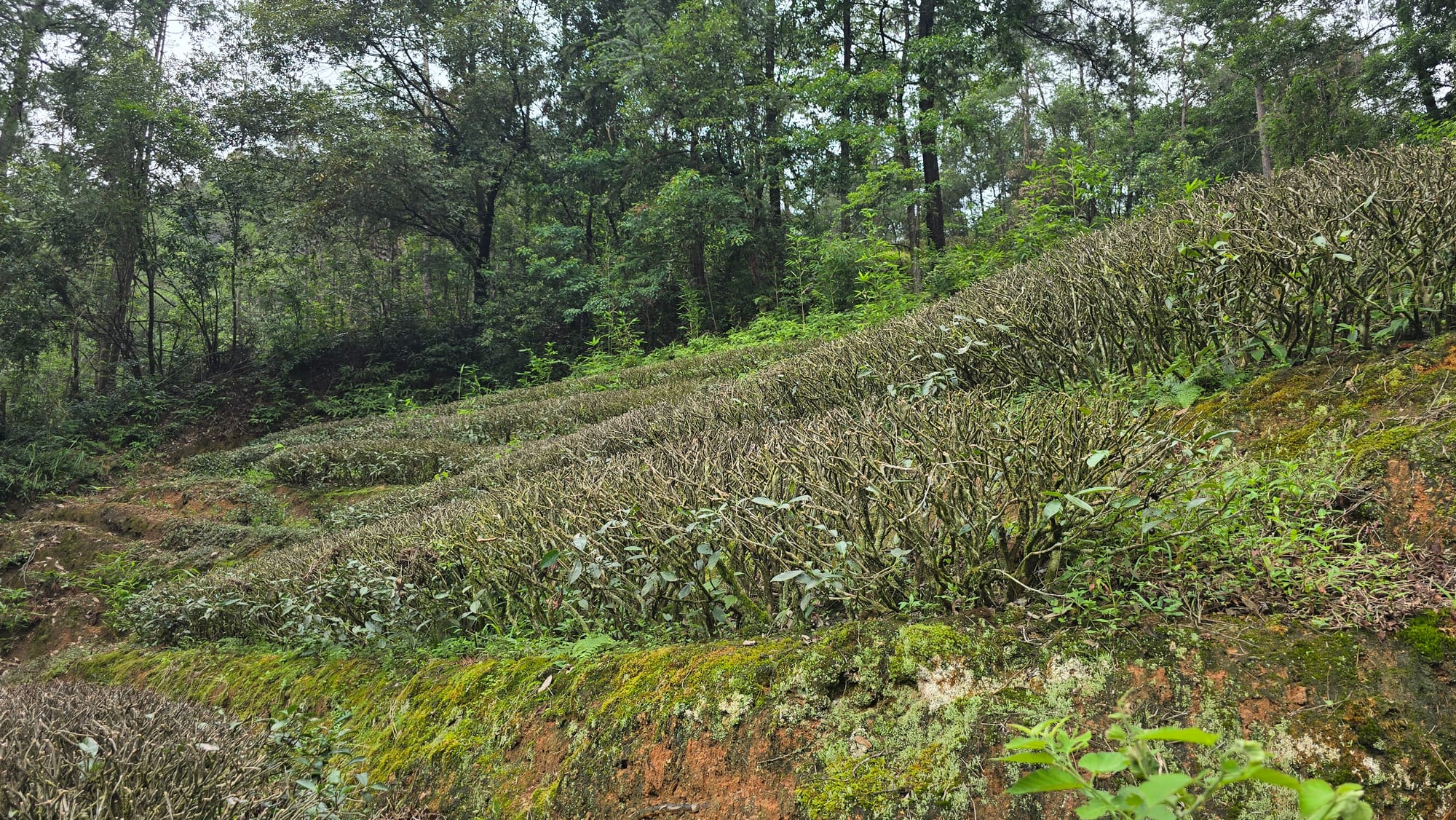
The majority of the tea bushes within Wuyi are less than 10 years old. Most tea trees die within 30 years, from bi-yearly de-crowning and continuous over-fertilizing. Because of this, Wuyi farmers have redefined “lao cong” (老枞, old tree) to mean any rou gui (肉桂) above 30 years old, and any shuixian above 60 years old.
Speaking of which – when the farmers replant their tea bushes every less-than-30 years, they replace them with the most popular easy-to-grow cultivars, which are predominantly rougui (肉桂) and shuixian (水仙). Everything else is considered a 小品种 (“minor” or “small” cultivar). There is nothing wrong with rougui and shuixian, both of which can produce excellent yancha - though neither is an original Wuyi cultivar included in the Si Da Ming Cong (4 Famous Teas of Wuyi, 四大名丛), and the contemporary over-focus on these two cultivars (and the occasional substituting of either cultivar for a named small-cultivar, either entirely or in blending) dilutes or subverts the original taste, natural variety, and unique expressions of Wuyi tea – especially when the over-focus on these high-yield early-harvest cultivars reduce the production of older later-harvest cultivars.
Thus – some tea lovers (and many土豪) are buying taidicha-adjacent young-tree fertilizer-dosed high-yield early-harvest-cultivar tea based on a famous name. At insane prices, often 3 – 5x what you would pay for truly god-tier gushu pu’er or laocong (~300 year old) single-tree dan cong.
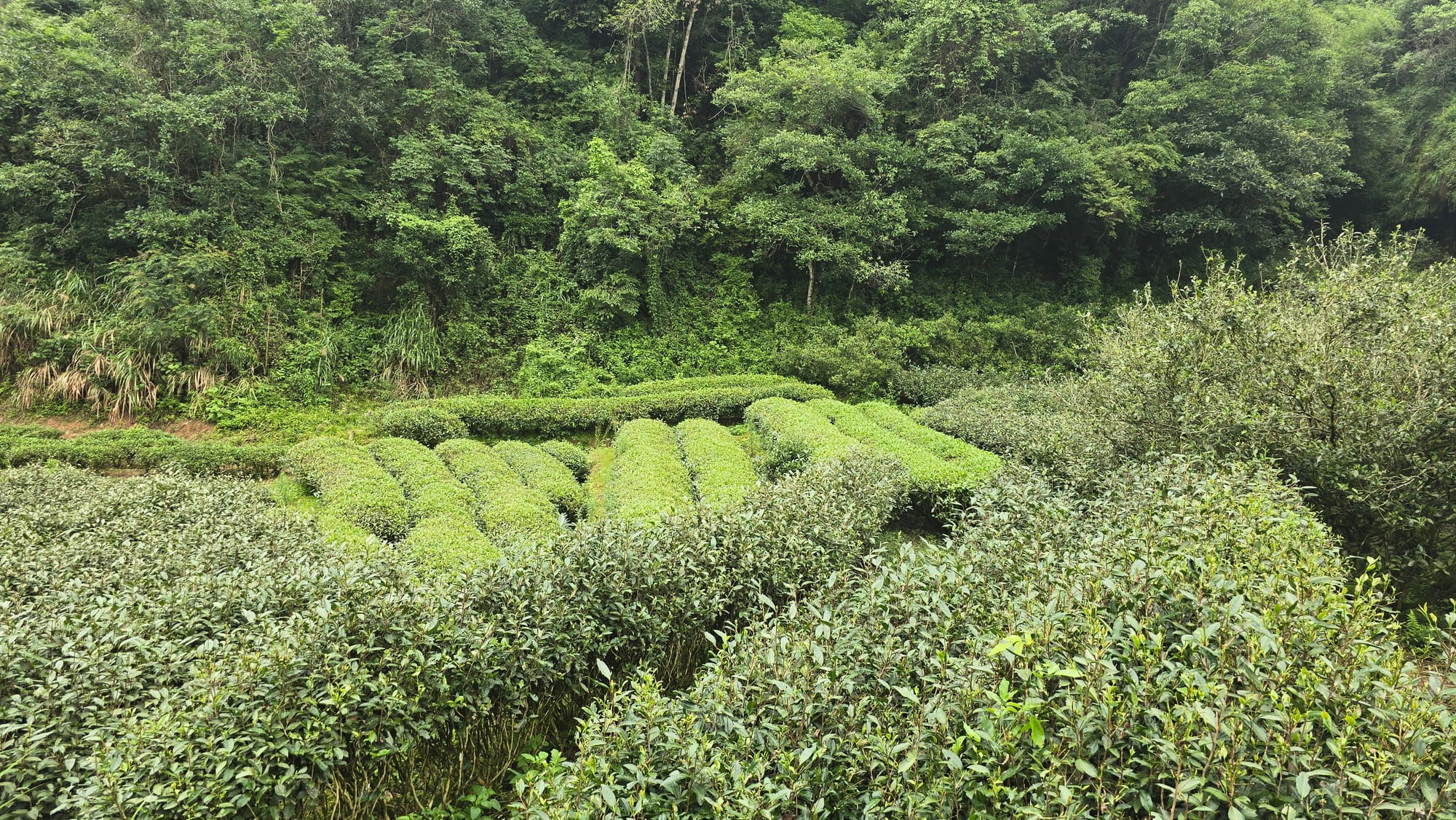
With that rant out of the way, it remains to be said that there are amazing true laocong Wuyi teas from named regions (if not the most famous; although it should be noted, as the majority of readers of this website are English speaking tea practitioners, our sense of “more famous vs less famous” is likely poorly calibrated). At viable (if not affordable) prices under $4 / gram. Just as in other tea mountains, there are farmers in Wuyi who sell to the highest bidder, and there are farmers who sell based on relationships steeped in knowledge of and love for tea. That is not to say that price isn’t a consideration – there is no world in which you’re getting a deal on “amazing untouched pristine semi-wild original cultivar from famous area because he’s a scholar and gentleman and wants everyone to taste his teas” – these scams exist, don’t fall for them, or enjoy your flood-plain river tea roasted to char – it’s to say that if those farmers with the oldest bushes were driven entirely by price motive, they would have already torn up the old trees and planted 4 new Rou Gui bushes in their place, all of which could be goosed with fertilizer.
Also – does anyone want to talk about seed grown tea? The difference in flavor and quality between tea grown from seed versus tea grown via genetic prorogation? No? I’ll save it for the book.
Conversations and debates with Wuyi tea makers
While every reader of this blog can indubitably attest to my easy-going manner, light presence, and calming conversational cadence, I carry the burdensome yet resolute duty to vigorously question, nay debate, our contacts to test the breadth, depth, and reasoning of their position and convictions on topics related to tea. The fainting couch is near and the smelling salts close at hand, I’m sure you’ll make a full recovery from this shocking revelation and see the wisdom of my ways in due time. We may even venture to parlay, if you so desire, should we have the fortune to meet in person. Anyway, onward with the topic…
One such reoccurring disagreement was on the value of lao cong tea trees. It is my humble yet firm opinion that older trees (in general, on average, etc.) produce better tea than younger trees. This was hotly denied by almost everyone in Wuyi. They argue, in summary, that lao cong trees produce tea with more forest flavor and less floral notes (which I agree with); they conveniently leave out the counter point that older trees produce tea with more yan yun.
If you press this point, you may receive a barrage of arguments, including “not all old trees are good” (neither are all young trees), “leaves of old trees can’t take the high roast” (roast them appropriately – shape the process to the tea, not the tea to the process), “people want more fragrance” (except for those who don’t), the older trees are often qizhong and have unusual flavors which are difficult to understand and market (which is why they’re special!), and so on.
I was not moved off this position, and taking Dancong tea as a guide, I don’t even believe that most of what Wuyi farmers and merchants call laocong tea is truly of laocong age and profile (though I will allow that old-trees gain their forest flavor earlier in Wuyi than Wudong).
Because the internet is large and its denizens are more combative than constructive, I will write defensively here that there are good teas from young trees made in Wuyi. To deny so isn’t my point, and I don’t buy tea exclusively based on the age of the tree. My argument is narrowly: “places that care for their trees such that they can reach lao cong status in age and flavor produce teas with those unique flavors which I value and prefer”. If you disagree with this, please re-read the paragraph for more information on my opinion.
Conversations and debates with Dancong tea makers
After Wuyi, I returned to Chaozhou to continue our studies for a future-book, and truly in part to drink some good tea with good friends. I relished the idea of telling my Chaozhou friends about my Wuyi experience, about how much I preferred the tea and tea-culture of Dancong to Yancha.
I did not expect the uniform and blunt rejoinder I unanimously received from my group of Chaozhou 茶人: “Chaozhou is the same, Dancong is the same”. Chaozhou growing areas throughout Fenghuang face similar challenges to Wuyi – there is overplanting of fragrant easy to grow cultivars (such as 蜜兰香 and 鸭屎香), mother-trees die every year, development encroaches on historical growing areas, and the majority of the tea is from young trees doused in fertilizer.
My Chaozhou tea friends quite strongly defended Wuyi as a growing area, sharing some excellent yancha with me – which I appreciated. They pressed the idea that deeper in the park, further away from the famous growing areas, in small jians with unknown names, there exists a more pristine environment with older trees and people who care about the health of their plants. That matches with my thoughts and what I have written here.
Still, after seeing both Wudong and Wuyi – there is in my mind a clear difference in the level of care taken to preserve the environment, the impact of tourism, and the level of commercialization between these places. It is good to be reminded that the problems I wrote about here are faced by other tea growing areas beyond Wuyi and Wudong, including places as diverse as Xihu (Long Jing) and Yiwu (Pu’er).
What can I do with this information?
Sell your worldly possessions, accept the precepts, take a vow of silence, and move to 天心永乐禅寺 (Tian Xin Yong Le) temple in Wuyi. They have good access to tea, with better tea available to higher monks, especially those who take up vows and live as hermits. Admittedly, that’s a touch rough, so you could mortgage your home and invest in name-brand famous-area yan cha, though it’s not really an investment if you’re drinking your own supply, and what millennial tea DINKS even own a home in the United States? Really there’s nothing you can do, give up now and stick to buying Dayi factory bings which are good actually (iirc, I am not a doctor, this is not medical or financial advice, I didn’t test the product myself, I only read an online review).
Perhaps more helpfully;
I came away from Wuyi with relatively little actionable advice – at least positive advice. Wuyi attracts a lot of tourists, money, and mythologizing, which is a perfect confluence of factors for grifters to make their mark on your tuition budget. I’ve paid my share of tuition over the years, buying not-great Wuyi tea at Wuyi prices from various online vendors and contacts in China starting years before even setting foot in Wuyi, and I still found it hard to find great tea.
The great tea I did find was thanks to 2 very helpful individuals who know who they are and whom I thank deeply. We had some very interesting light-roast Wuyi production which, the maker argues, is more traditional than the darker roast now considered “traditional”; his arguments are not unconvincing, though I favor the availability of a range of roast levels.
If you don’t have contacts, don’t have a great BS meter, don’t like tasting an un-curated selection of river tea and char, I’d suggest going elsewhere, buying from trusted sources, or only visiting Wuyi as a tourist.
The best way to develop your taste and ability to identify great Wuyi teas is the same as with any other class of tea: taste widely, taste with people you trust, taste with small groups of people and discuss, and compare notes after writing your own. From my own preferences and experience, great Wuyi tea, particularly lao cong, will feel quite warming and may give you the hot-hand qi effect; bad tea doesn’t often do that.
Unlike other tea regions, I do not suggest tasting beyond your budget. With pu’er it often makes sense to taste a sample of aged gushu from a famous area, to get an idea of how new teas and more affordable options compare, and what tea from an area might age into. With dancong, it often makes sense to taste beyond your budget, sampling a lao-cong-single-tree from Wudong for example. With Wuyi…. I don’t recommend this. Stay in your budget and focus on the flavor and feeling, not the story and place. Blowing your budget is highly unlikely to reset your scale or find anything great unless you already have an established contact with great tea you’re already floored by at your current price-level.
An unsatisfying conclusion
What will I do with this experience? Bluntly – I’ll write other books, focusing on Dancong, Chaozhou Gongfu, and Pu’er before I begin writing a book on Wuyi tea; but the prescription for this ailment, in my specific case, is to spend a lot more time in Wuyi. Access to great teas and less surface-level information is built on relationships, knowledge, and experience – and the only way to gain, maintain, and grow relationships, knowledge, and experience is to spend the time there: tasting, hiking the picker trails, meeting people, and pushing forward. It’s what’s worked for me in every tea area I’ve built networks in. I don’t know exactly when I’ll return, yet I know that Wuyi, the best of Wuyi, remains in my future, distantly visible on the horizon.
